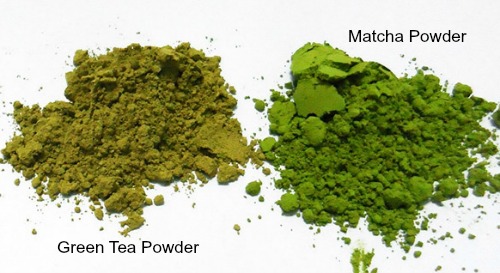
Matcha: A Different Kind of Green Tea
Matcha is a vibrant green powdered tea used in traditional Japanese tea ceremonies and has therefore always enjoyed a special status in the Japanese culture. It is made from the leaves of the shade-grown Camellia sinensis tea plant, which is native to Asia. Unlike Chinese green tea where the tea leaves are pan fried, Japanese green tea leaves are steamed, dried, and left unoxidized. Matcha is produced when these leaves are further processed and then carefully ground to a fine powder, often in a stone mill. The resulting powder is then mixed with hot (but not boiling) water and stirred with a bamboo whisk into a frothy brew.
A Great Source of Antioxidant
Since matcha is unfermented, there is little oxidation of the polyphenol catechins that give green tea its health-enhancing properties. In prior studies, it has been suggested that tea polyphenols may reduce the risk of gastric, esophageal, and skin cancers; may prevent blood clotting; and may even lower cholesterol levels. Researchers from Colorado University confirmed that the concentration of epigallocatechin gallate (EGCG) - a very powerful antioxidant - is 137 times greater in matcha than the amount of EGCG available from Chinese green tea. This is probably because the whole leaf is consumed with matcha, rather than just an infusion brewed from leaves, as in regular green tea.
Using Matcha
To make a cup of matcha, all you need is one teaspoon of the matcha powder for every cup (or so) of hot water. In addition, matcha can also be added to just about any food or recipe you can think of, which is why matcha continues to gain popularity in the international food and beverage scene. Since matcha is a powder and its flavor profile blends particularly well with dairy products, you are most likely to find matcha in lattes, milkshakes, ice cream, cheesecakes, and many other desserts and baked products. The only downside to this wonderful green powder is its cost. Available mostly at specialty tea stores and certain chain cafes, a serving of matcha is at least twice as expensive as its regular green tea counterparts, while special ceremonial matcha costs up to 15 times more than a regular cup of green tea.
The Bottom Line
Matcha is a very rich source of EGCG, a very powerful antioxidant that is commonly found in tea. The fact that matcha is a powder allows it to be added to a variety of food and beverages (such as milk, yogurt, desserts, and baked products) to bump up your antioxidant intake.
Disclaimer: This website is for information purposes only. By providing the information contained herein we are not diagnosing, treating, curing, mitigating, or preventing any type of disease or medical condition. Before beginning any type of natural, integrative or conventional treatment regime, it is advisible to seek the advice of a licensed healthcare professional.
![]()







